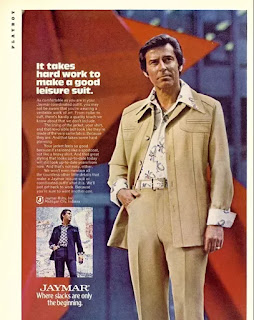 |
| Pourquoi le jazz? The question on everyone's lips. |
Q: I struggled with asking if I HAVE to learn trad jazz or if I SHOULD learn it, so take this question as both. And just as a disclaimer, I’m using “trad jazz” to mean the standards and the jazz being played predominantly from the ’20s to the ’60s and the styles that encompassed.
So we're clear on terminology, “trad jazz” is a term that has come into use in recent decades, which means Dixieland, and probably would also include “Gypsy” jazz. It does not mean contemporary modern jazz of the 20s-60s, as this person implies. If you're on a gig and someone calls Dolphin Dance, and you say “I'm not into that trad stuff” or “cool, I love trad jazz” you will get a very funny look and probably never be called again.
He continues:
I’ve been led by a lot of people to think that, even if you’re into more funky fusion styles of jazz, in order to play more modern stuff proficiently you should learn to walk, transcribe, and learn standards, etc., etc. And even if you aren’t playing that kind of music the discipline and technical gains will help you as a player, which I have no doubt is true. But if I am definitely most interested in more funk/fusion type music and I rarely ever listen to traditional jazz how important do you think it is it to practice this stuff? This is something I’ve wrestled with for a long time. I’ve jumped into learning to walk and solo over standard changes but always found myself jumping out after a while because it just doesn’t relate to what I like to play and the music I hear and like to write. And I don’t listen to it that much either which makes it more difficult.
If I had 5 hours a day to practice, this probably wouldn’t be an issue. I could fit in many different topics to practice. However, real life limits the number of hours I have to practice. So I guess this boils down to wondering if I should be spending my time in the shed on things that are really not totally related to what I like to play just for the knowledge I will gain on the instrument and for the technical and overall musical outcome it will provide.
Maybe another way to sum it up and put it is this: Should I be learning the bass lines on Herbie Hancock’s Maiden Voyage album to help me better play and write the type of stuff he was doing with the Headhunters, which I’m much more into musically?
The question is kind of a throwback to the 70s and 80s— the last time funk influences seemed to be eclipsing swing influences in jazz. I suppose it's easy now to forget how successful Wynton Marsalis's campaign was to re-center jazz around bebop. For decades it has been an unquestioned thing that if you're calling yourself a jazz musician in any way, shape or form, you have to be able to play bebop.
I actually don't know what the questioner here is complaining about— learning to play acoustic bass would be a much bigger commitment than just learning to play jazz on electric. Like, learn some tunes and shut up. For drummers, though, bebop is quite different stylistically from anything else we do, so maybe the question is more relevant— it involves a big commitment of time and attention.
Here's why to do it:
It's a baseline skill for professional drummers. Jazz has been dying, so they say, since the 50s, but it keeps hanging around, and there are still significant gigs available. Many of the steadiest and best paying gigs accessible to average players involve some degree of playing jazz.
There's a professional culture built around it.
Apart from gigs where you actually have to play jazz, there is a sizable cadre of professional musicians who are primarily jazz musicians, who will really only call other jazz musicians for gigs— whatever the style of music. At the very least, they're most likely to call people they already play with, which will be jazz guys.
It's what's taught in school. If you're in high school or college and wanting to play modern music, jazz is the main form in which they teach it.
Teaches you to improvise. There's a reason jazz musicians don't sweat rehearsals— indeed, it's hard to get them to rehearse at all: they have learned to sound good the first time they play something, with or without music, without ever having heard the tune before.
Teaches you to think melodically.
Not just in the Ari Hoenig sense of tapping out melodies on the drums, but in the sense of playing off of the melody of a tune, or a bass line, or a soloist. See the Syncopation-based methods I'm constantly talking about... that system was originally created in aid of playing jazz, and most teachers only know it in that context.
Teaches you to play musically. There are numerous large and small ways in which the demands of playing jazz improve your overall musicianship. Do you think I have time to think of them all and list them all for the sake of a little blog post? Sir or madam, I do not.
It's what good drummers do.
It's a very creatively rewarding and challenging field of music, which is the type of thing intelligent, ambitious players seek out. Even if, like me, you don't think you're very intelligent, you should just do what the smart people do. Imitate their actions, and in a couple of decades no one can tell the difference.










